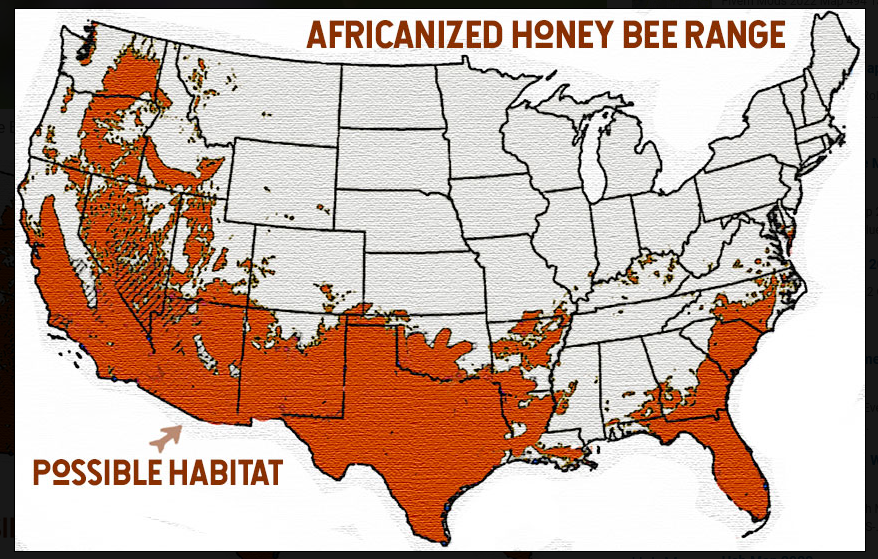r/Beekeeping Wiki
Africanized Honey Bee Biology
Africanised honey bees are the result of crossbreeding between an African honey bee (Apis mellifera scutellata) and various European subspecies (such as Apis mellifera ligustica and Apis mellifera carnica). Scientists intended to breed a honey bee better adapted to tropical conditions, as the European honey bee colonies were poor honey producers and only survived under intensive management.
Due to their aggressive nature, Africanised bees pose a greater risk to human safety. Not because of a larger or more lethal dose of venom in their stings, rather due to their aggressive attacks, thus delivering a greater dose of bee venom. Deaths occur due to their tendency to sting in large numbers, with Franca & colleagues reporting the deaths of two men in Brazil from repeated stings (Franca et al., 1994)- one of the reasons for calling them “killer bees”.
AHB Genetic Lineage
Africanised honey bees are hybrids of several lineages of the African honey bees, A. m. scutellata and other subspecies, lineages traditionally referred to as A (African), M (Western European), C (Eastern European), and O (Middle East). As the degree of African (A) genetics increase, the Eastern European lineage (C) decreases, whilst the Western European (M) ancestry maintains a significant amount in their genomic makeup. Both M and A ancestry contribute to defensive nest behaviours in the Africanised honey bees (Harpur et al., 2020). So it is not the A lineage alone, rather a combination of A & M that produces extreme defensive behaviours.
AHBs & Disease Resistance
Ramos-Cuellar and coworkers found that Africanised honey bees were more resistant viral infections and Varroa infestations compared to European bees (Ramos-Cuellar et al., 2022). In the 365 colonies sampled from Mexico, the authors found varroosis (high Varroa mite infestations) to be most common, whereas Nosema disease was the least common.
Factors that explain the higher relative resistance of Africanised bees to Varroa and other diseases include the high rates of colony swarming† and hygienic, grooming behaviours, making Varroa less effective at a parasitising Africanised bee brood compared to their European counterparts (Guzman-Novoa et al., 2020).
Identifying AHBs
Identification of Africanised honey bees is difficult, for they are similar in size and colouration to their European counterparts. Genetic testing is the only reliable method to test for AHB Southern Arizona Beekeeper’s Association.
A rule of thumb: if your state department indicates that AHBs have the potential to thrive in your area, then treat all wild colonies as potential AHBs.
The map below shows the theoretical potential range for AHBs. Refer to your local beekeeping club/agricultural department for the latest information.

AHB Behaviour
-
Africanised bees are far more aggressive (“defensive”). They send worker bees more quickly to disturbances and will pursue a threat for over 500 meters.
-
They swarm more frequently than European bees (once every month or two versus once every year), and will establish nest in spots a European colony would not.
- This is harder to discern for the non-expert. After all, how would you know if that spot behind the hot water meter boxes is a normal nesting?
-
They are vigorous groomers and cleaners. Their hygienic behaviour makes them less susceptible to pests and diseases, (covered above).
If you live in more tropical climates and Africanised honey bees are established in your location, then a professional assessment from beekeepers and entomologists, or genetic testing is worthwhile.
If you live in cooler climates, then it is highly unlikely you’ve encountered an Africanised honey bee colony, as they do not withstand cold conditions - it could just be a poorly managed colony in need of a new queen.